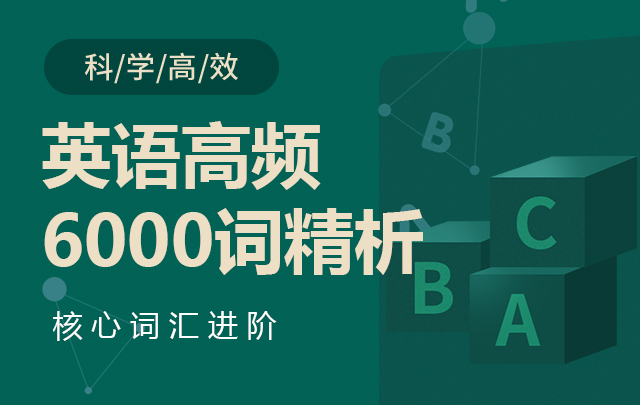Japanese Experiment Breaks Record for Internet Traffic Speed
日本实验打破互联网传输速度记录
【听力音频】
--------------------------------------------------------------------------
By Bryan Lynn
03 January 2024
Japanese researchers say they have broken the world speed record for sending internet data.
The recent experiment involved sending data over fiber-optic lines enclosed inside cables. Fiber optic technology is currently the fastest way to transport, or transmit, internet data.
Fiber-optic cables use signals of light to send data over long distances. The fiber material is very thin, about one-tenth the thickness of a human hair.
Fiber-optic technology was meant to replace an older internet transmission method that uses cables made mainly of copper wiring. This method can also carry data over the internet, but at much reduced speeds and capacity compared with fiber-optics.
A report released last year by the United Nations' International Telecommunication Union (ITU) suggested current worldwide internet data transmission is reaching full capacity levels.
The Japanese data transmission experiment used fiber-optic cables. But the engineers involved made some changes to the cables in an effort to greatly expand speed and capacity.
Such methods are known as multiplexing technologies. They aim to increase the amount and speed of internet data with existing transmission equipment. These technologies combine multiple communication signals into a single transmission line.
One multiplexing technology – called Wave Division Multiplexing (or WDM) – aims to increase the wavelength capacity within transmission cables. Another method – called Space Division Multiplexing (or SDM) – can involve increasing the size or number of fiber-optic centers, called cores.
Engineers from Japan's National Institute of Information and Communications Technology (NCIT) led the researchers who carried out the experiment. The tests measured speeds in petabits. One petabit equals 1 million gigabits.
The record transmission demonstrated a data transmission capacity of 22.9 petabits per second in a single fiber-optic cable. The previous record for data transmission was 10.66 petabits per second, set by the same team at NCIT.
Major progress has been made in recent years in internet data transmission speeds. In October 2022, an international group of researchers announced they had broken the world record. That team reported they had reached a test rate of 1.8 petabits per second using a single optical cable.
Results of the Japanese experiment were officially presented in a paper released at the 49th European Conference on Optical Communications in October. The team said it was able to beat the previous record by a large amount using new methods to expand and combine different WDM and SDM elements.
The method used a fiber-optic cable that contained 38 cores. The researchers said expanding the number of cores resulted in an "increased number of optical paths" for high-speed data transmission.
One researcher was Chigo Okonkwo of Eindhoven University of Technology in the Netherlands. He told the country's NL Times the rate of 22.9 petabits per second represented "about 20 times the global internet traffic per second." Okonkwo also noted the speed is about 229 times the total capacity of the kinds of fiber-optic cables currently in use today.
Worldwide, the estimated average internet data transmission speed in 2023 was about 46.8 megabits per second, international research service Statista reports. The rate reached 118.7 megabits per second in Western Europe, while Northern Africa had the lowest estimated rate at 9.8, Statista said.
The American-based Pew Research Center studies internet data transmission rates across the United States. Pew reports the fastest current data transmission method available in the U.S. – called Fiber to Home – is about 10 gigabits per second. This amount is equal to about 10,000 megabits per second.
Most Americans receive much slower data transmission rates, an average of just under 50 megabits per second. Pew estimates Fiber to Home service only accounts for about 20 percent of the U.S. internet service market.
The NCIT team described its latest test results as "a major step toward the realization of future ultra-large capacity optical communication networks." But in order to reach this goal, the team said its current methods must be further perfected.
For example, the researchers pointed to one major issue that could delay future deployments of its super-fast fiber-optic system. This will be the need to complete "significant upgrades" to current telecommunication hardware systems in order to support the new cable technologies.
I'm Bryan Lynn.
The Associated Press and Reuters reported this story. Bryan Lynn adapted the reports for VOA Learning English.
--------------------------------------------------------------------------
作者:Bryan Lynn
2024年1月3日
日本研究人员表示,他们已经打破了发送互联网数据的世界速度记录。
最近的这次实验涉及通过光缆内部的光纤线路发送数据。光纤技术目前是传输或传送互联网数据的最快方式。
光纤电缆使用光信号在长距离内发送数据。光纤材料非常薄,大约只有人类头发厚度的十分之一。
光纤技术旨在取代主要使用铜线制成的电缆的旧式互联网传输方法。这种方法也可以通过互联网传输数据,但与光纤相比,速度和容量大大降低。
联合国国际电信联盟(ITU)去年发布的一份报告暗示,当前全球互联网数据传输正在达到满载水平。
日本的数据传输实验使用了光纤电缆。但参与的工程师对电缆进行了一些改动,以大大提高速度和容量。
这种方法被称为复用技术。它们旨在增加现有传输设备的互联网数据量和速度。这些技术将多个通信信号合并到一个传输线路中。
一种名为波分复用(WDM)的复用技术旨在增加传输电缆内的波长容量。另一种方法——空分复用(SDM)可能涉及增加光纤中心(称为核心)的大小或数量。
日本国家信息和通信技术研究所(NCIT)的工程师领导了进行实验的研究人员。测试以百万兆比特(petabits)来测量速度。一个百万兆比特等于一百万千兆比特。
记录显示,单根光纤电缆的数据传输容量达到每秒22.9百万兆比特。之前的数据传输记录是每秒10.66百万兆比特,由NCIT的同一团队设定。
近年来,互联网数据传输速度取得了重大进展。2022年10月,一个国际研究团队宣布他们打破了世界纪录。该团队报告说,他们使用单根光缆达到了每秒1.8百万兆比特的测试速率。
日本实验的结果在10月份的第49届欧洲光通信会议上发布的一篇论文中正式公布。该团队表示,他们能够使用新方法扩大和结合不同的WDM和SDM元素,大幅度超过了之前的记录。
该方法使用了一根包含38个核心的光纤电缆。研究人员表示,增加核心数量导致了“光路数量的增加”,从而实现了高速数据传输。
其中一位研究人员是荷兰埃因霍温理工大学的Chigo Okonkwo。他告诉该国的NL Times,每秒22.9百万兆比特的速率代表了“全球每秒互联网流量的大约20倍”。Okonkwo还指出,这个速度大约是目前正在使用的光纤电缆总容量的229倍。
据国际研究服务机构Statista报告,2023年全球平均互联网数据传输速度约为每秒46.8兆比特。在西欧,这个速度达到了每秒118.7兆比特,而北非的估计速度最低,为每秒9.8兆比特,Statista说。
美国皮尤研究中心研究了美国各地的互联网数据传输速度。皮尤报告称,目前在美国可用的最快数据传输方法——称为“光纤到户”——的速度约为每秒10千兆比特。这个数量等于每秒约10,000兆比特。
大多数美国人接收的数据传输速度要慢得多,平均速度仅略低于每秒50兆比特。皮尤估计,光纤到户服务只占美国互联网服务市场的约20%。
NCIT团队将其最新的测试结果描述为“实现未来超大容量光通信网络的重要一步”。但为了达到这个目标,团队表示,当前的方法必须进一步完善。
例如,研究人员指出了一个可能会延迟未来部署其超快光纤系统的主要问题。这就是需要对当前的电信硬件系统进行“重大升级”,以支持新的电缆技术。
我是Bryan Lynn。
这个故事由美联社和路透社报道。Bryan Lynn为VOA学习英语改编了这些报道。
--------------------------------------------------------------------------
这个故事中的词汇:
fiber optics – n. 一种使用非常细的玻璃或塑料线通过光传输数据的技术,尤其用于互联网和计算机应用
cable – n. 由塑料覆盖物包裹的一组电线
capacity – n.可生产或容纳的某物的总量
wavelength – n. 两个能量波之间的距离
upgrade – n. 提高计算机或机器质量或实用性的设备或软件
本文关键字:
 免费试听
免费试听

时长 : 5:22 主讲 : 金格妃

时长 : 27:51 主讲 : 金格妃

时长 : 17:20 主讲 : 郭宁

时长 : 3:54 主讲 : 金格妃

时长 : 26:58 主讲 : 乔迪

时长 : 26:58 主讲 : 乔迪

时长 : 26:58 主讲 : 乔迪

时长 : 3:54 主讲 : 金格妃

时长 : 1:46 主讲 : 金格妃
 推荐阅读
推荐阅读
Webb Telescope Captures Images of 19 Spiral Galaxies 韦伯望远镜捕捉到19个螺旋星系的图像
来源 : 网络 2024-02-19 13:01:00 关键字 :
Student Academy Awards Provide ‘Momentum’ for Young Filmmakers 学生学院奖为年轻电影制作人提供“动力”
来源 : 网络 2024-02-19 11:48:00 关键字 :
Do You Have a Doppelg?nger ? 你有一个“分身”吗?
来源 : 网络 2024-02-18 11:37:00 关键字 :
Is Elon Musk Worth $55 8 Billion to Tesla?埃隆·马斯克对特斯拉来说价值558亿美元吗?
来源 : 网络 2024-02-18 11:32:00 关键字 :
Remembering Chita Rivera 记忆中的奇塔·里维拉
来源 : 网络 2024-02-16 11:26:00 关键字 :
Women to Take Center Stage at the Grammys 女性将在格莱美奖上占据主导地位
来源 : 网络 2024-02-16 11:20:00 关键字 :
Reduction and Assimilation 音节减少和同化
来源 : 网络 2024-02-15 11:13:00 关键字 :
Why Is Canada Limiting Foreign Students? 为什么加拿大要限制外国学生?
来源 : 网络 2024-02-15 11:07:00 关键字 :
It Has Never Been More Costly to See the Super Bowl 观看超级碗的费用从未如此高昂
来源 : 网络 2024-02-14 11:02:00 关键字 :
Australian Filmmaker Shows Japanese Single Mothers, Children Face Poverty 澳大利亚电影制片人展示日本单亲妈妈和孩子面临贫困的情况
来源 : 网络 2024-02-14 10:55:00 关键字 :


 精品课
精品课
价格 : 0元
限报人数:1000人
价格 : 0元
限报人数:1000人
价格 : 0元
限报人数:1000人
价格 : 0元
限报人数:1000人
 阅读排行榜
阅读排行榜
 相关内容
相关内容